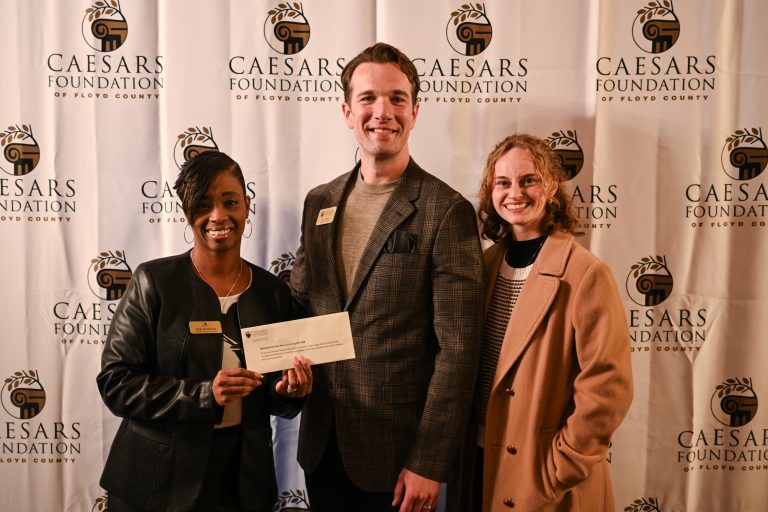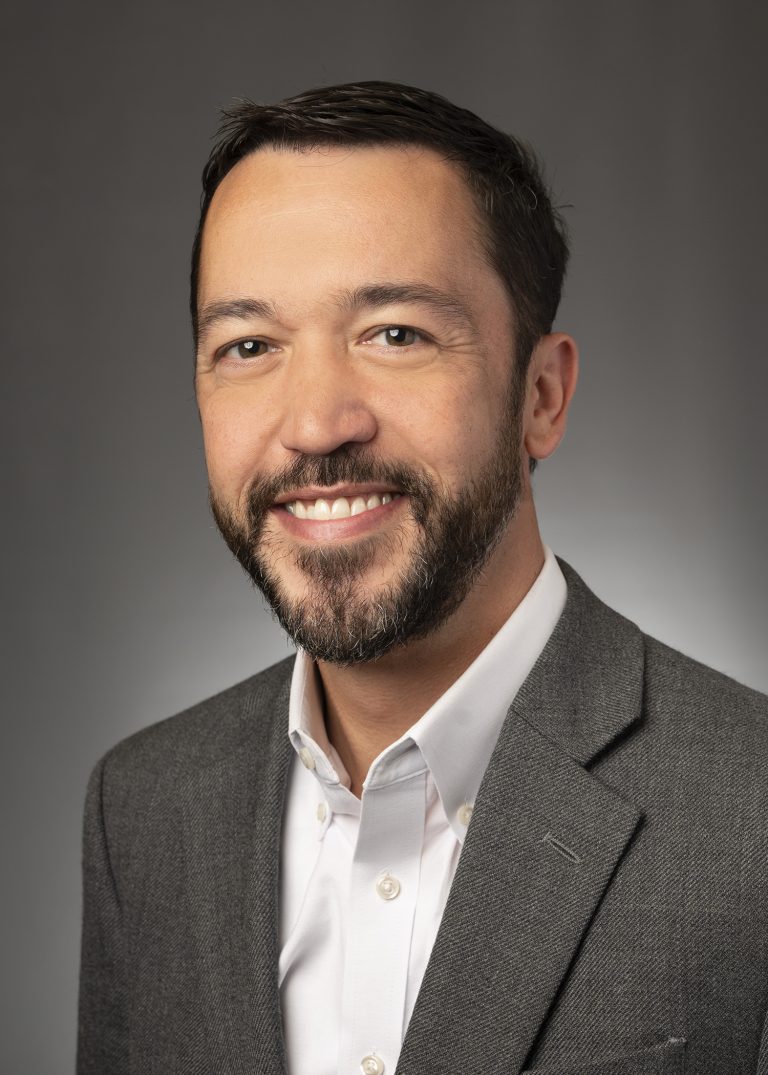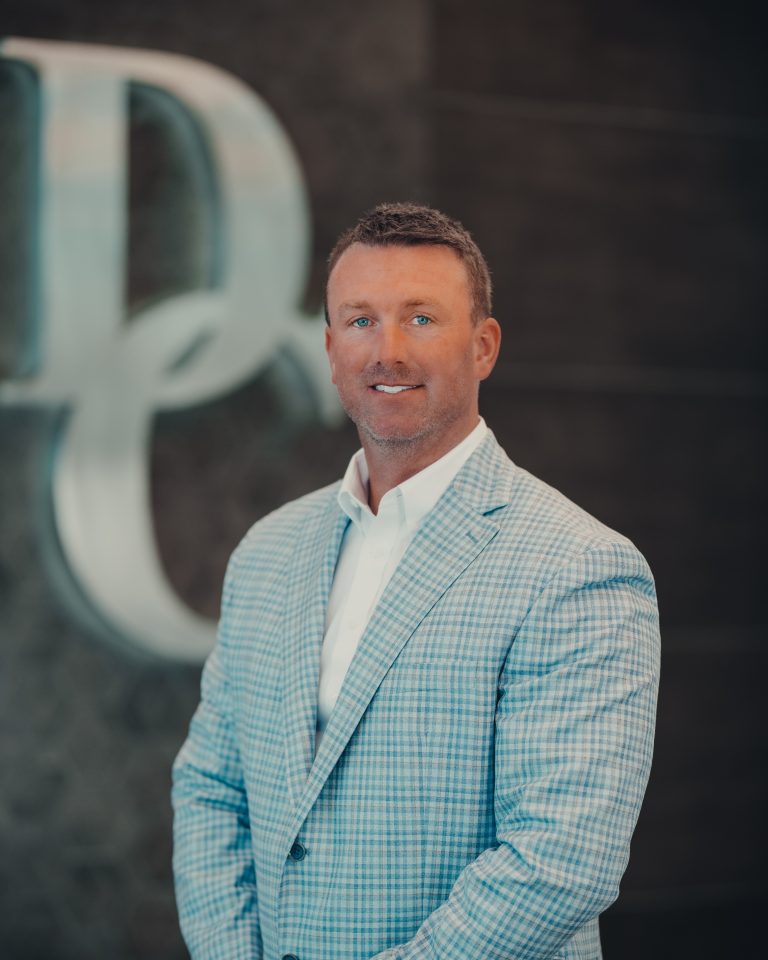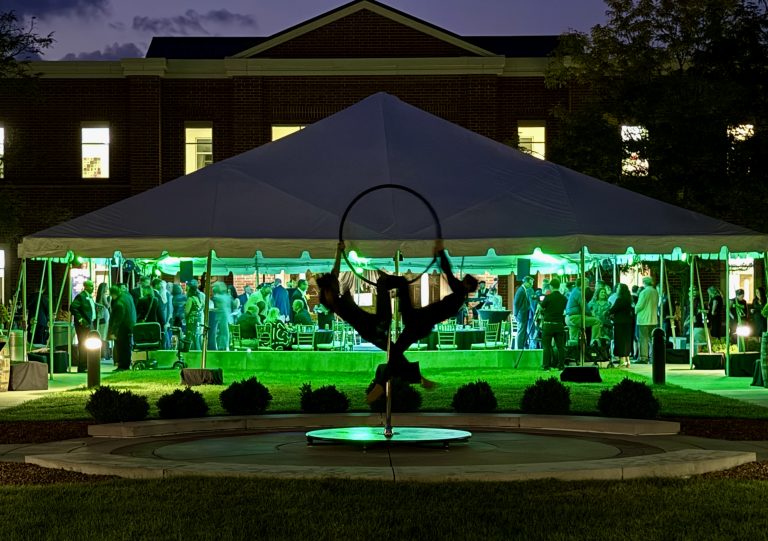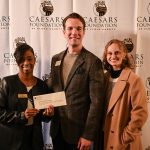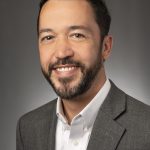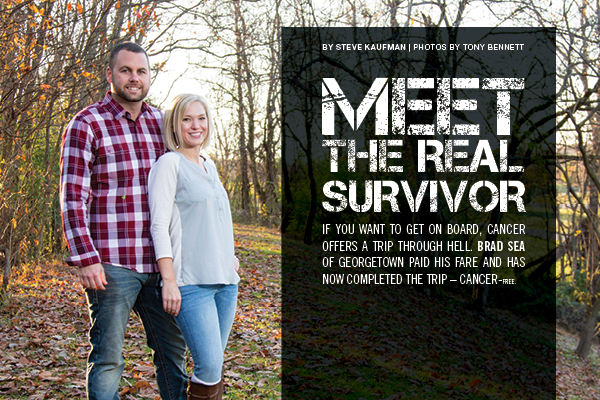
By Steve Kaufman
If you want to get on board, cancer offers a trip through hell. Brad Sea of Georgetown paid his fare and has now completed the trip – cancer-free.
These were July Fourth fireworks nobody would celebrate.
On July 4, 2008, Brad Sea – a robust, athletic 27-year-old – was told he had a cancerous mass inside his chest cavity the size of a grapefruit. It was pushing into his heart and lungs, the reason he had been realizing frequent coughing, fatigue and night sweats for the past couple of weeks.
First thought: “How long do I have?”
The answer: After the requisite CT scan, a biopsy, a positive diagnosis and a week of pretty intensive chemotherapy, “maybe six months.”
Brad saw two clear options. “I could fight, for whatever good that might do,” he explained, “or I could simply live out my time in as much comfort as I could find.”
His choice: Fight like hell!
He was about to discover what hell looked like.
Cancer attacks by taking your strength, taking your breath, taking your ability to fight pain, taking your ability to fight back – and then, when you can take no more, it takes your life.
But let’s roll back the video a little, to the moment when Brad Sea, a young non-smoker with a healthy, fairly risk-free lifestyle, got blindsided by such a vicious enemy.
On the afternoon of July 3, 2008, his co-workers at the Chase Bank in Sellersburg told him he looked terrible; go to the doctor.
“I went at lunchtime and my family physician took my blood pressure,” Sea recalled. “I had a resting heart rate of 138 beats per minute [normal is below 100] and she sent me off to a cardiac specialist for an ultrasound.”
That ultrasound tech saw something wrong and sent him immediately to Floyd Memorial Hospital for a CT scan of his chest cavity.
This all happened within about six hours.
Sea was admitted to the hospital and, at 6:30 the next morning, was awakened with this news: A tumor trapped inside his rib cage was blocking off 30 percent of his left lung and had essentially pushed his heart into a corner, squished against the cavity wall so hard it couldn’t take full pumps.
Although the attending physician was pretty sure it was cancerous, a biopsy was done immediately and a pericardial window was cut into the chest cavity so his heart had room to function.
He lay in the hospital for five days while the biopsy confirmed what everyone already seemed to know.
Malignant.
And then, out of nowhere, came one of those peculiar, coincidental interventions that no one – except maybe clergymen – can ever explain.
It turned out his physician, Dr. Eli Hallal, had recently gone to a seminar by noted oncologist Dr. Lawrence Einhorn about this very thing: germ cell tumors that, for some reason, occasionally occur inside various parts of men’s bodies.
Hallal asked that Sea’s biopsy report and pathology slides be sent to Einhorn at the Indiana University Medical Center. The next day, Einhorn contacted Floyd Memorial: “Get him on chemo right now!”
It turns out that Einhorn had created the chemotherapy regimen for exactly this type of cancer.
“I started my first round immediately,” Sea said, recently, “Monday through Friday, eight hours a day.”
Chemotherapy can sometimes feel like a cure that’s worse than the illness. Sea lost 55 pounds, his muscular 6-foot-2, 210 pound body dropping to 155 pounds. He suffered from extreme fatigue, muscle atrophy and intense nausea. He couldn’t eat. And when he did, he vomited.
Then he got the bad news. Even after chemo, he was given just a 50-50 chance of living a normal lifespan.
He was discharged, to his parents’ home in Floyds Knobs, and then the fight really began.
“Dr. Einhorn said, ‘We’re going to give you the most amount of chemo we can give you without killing you.’ ”
Once every three weeks for two months, Sea got up at 7:30 in the morning to be driven to the Cancer Care Center on Green Valley Road in New Albany for eight hours a day of chemo.
He recalls showing up on Fridays – a day the center was normally closed – and finding all the lights out and doors locked, waiting until the nurses showed up to open up for him, hook him up and stay with him the entire day.
All the while, Sea was introduced to a whole new vocabulary, funny-sounding terms like “alphafeto” tests (blood tests that measured the amount of alpha-fetoprotein in his blood, a tumor marker) and PET scans (positron emission tomography scans that measure how tissues and organs are functioning).
Funny-sounding, but not funny. Brad hopes nobody reading this ever has to become familiar with the terms.
Eventually, the tumor had shrunk sufficiently that it would now be possible to go in and get it out. Strange what passes for good news.
On Feb. 26, 2009, thoracic surgeon Dr. Kenneth Kesler cut Sea open, armpit to armpit, opened the rib cage and carved out the tumor.
The pain was so intense, recalled Sea, even everyday things like sneezing and coughing became major events. “Whenever I had to sneeze or cough, someone had to put a pillow over my chest and lay across me.” And forget about making him laugh.
Oh yeah, and still another round of chemo “just to be sure.”
Then, gradually, the storm stopped raging and the waters calmed. Sea’s weight came back, he became active again, and his doctor visits went from monthly to once a year. He played some volleyball and softball, though nothing that requires running. He lost part of his lung in the surgery and another portion is still collapsed. Deep breathing does not come easily.
He started a new business, opening up a Louisville branch of Atlanta-based Equity Prime Mortgage.
And he met Natalie Lamkin, through mutual friends.
“I told her my health history pretty early on,” said Brad. “The main thing is, I knew having children would be a challenge. With all the chemo, my body no longer naturally produces testosterone.”
A deal-breaker for Natalie? After all, she’s a kindergarten teacher at Mt. Tabor Elementary School in New Albany. So, you know, children matter. But Sea’s prognosis didn’t, at least not in that way.
They were married on June 7, 2014, six years almost to the month and day after Sea walked out of the Chase branch for his doctor’s appointment, saying over his shoulder, “I’ll be right back – see ya.”
Brad began taking a pill that helps his body produce its own testosterone. He now has a couple of vials of sperm cryogenically frozen.
They have an upcoming appointment to meet with a fertility specialist about in-vitro fertilization.
Perhaps someday, then, his children’s birthdays will become annual milestones of celebration along with the others.
July Fourths will come and go, too, and while they’ll stir some bad old memories, Brad says they’ll never have the “bang” for him that February 26 does. “That’s the day we get together with friends and family, go out to dinner, have a good India Pale Ale and some Blade & Bow bourbon.”
To celebrate the day of that surgery?
No, not just the surgery. It wasn’t only that, he says.
“It was the day I was given my life back.”
******************
Rara Avis
Where did this insidious cancer come from and how did it linger in Brad Sea’s body, undetected, practically without symptoms, until it grew to grapefruit size?
And what was the relation of Brad Sea’s cancer to Dr. Lawrence Einhorn’s very specific study of germ cell tumors in males? Einhorn’s claim to fame had been his study of testicular cancer. (Lance Armstrong had been a patient.)
As Sea had it explained to him, it’s fairly literally a womb-to-tomb phenomenon.
“In the womb, male fetus’ testiculars form on the backs of their necks,” he said. “As the fetus grows, these testiculars travel through the body on their way to the male scrotum and, as they travel, they leave behind some tissue. The tissue left behind in my chest cavity developed into this cancer.
“The tumor grew in the first 6-8 months, then lay dormant in my body for more than 25 years before it became active,” Sea said. “There are a couple of types of germ cell cancer. The one I had was one of the rarest.”
How rare?
“I read somewhere that there are only 500 cases diagnosed in the world per year.”





















